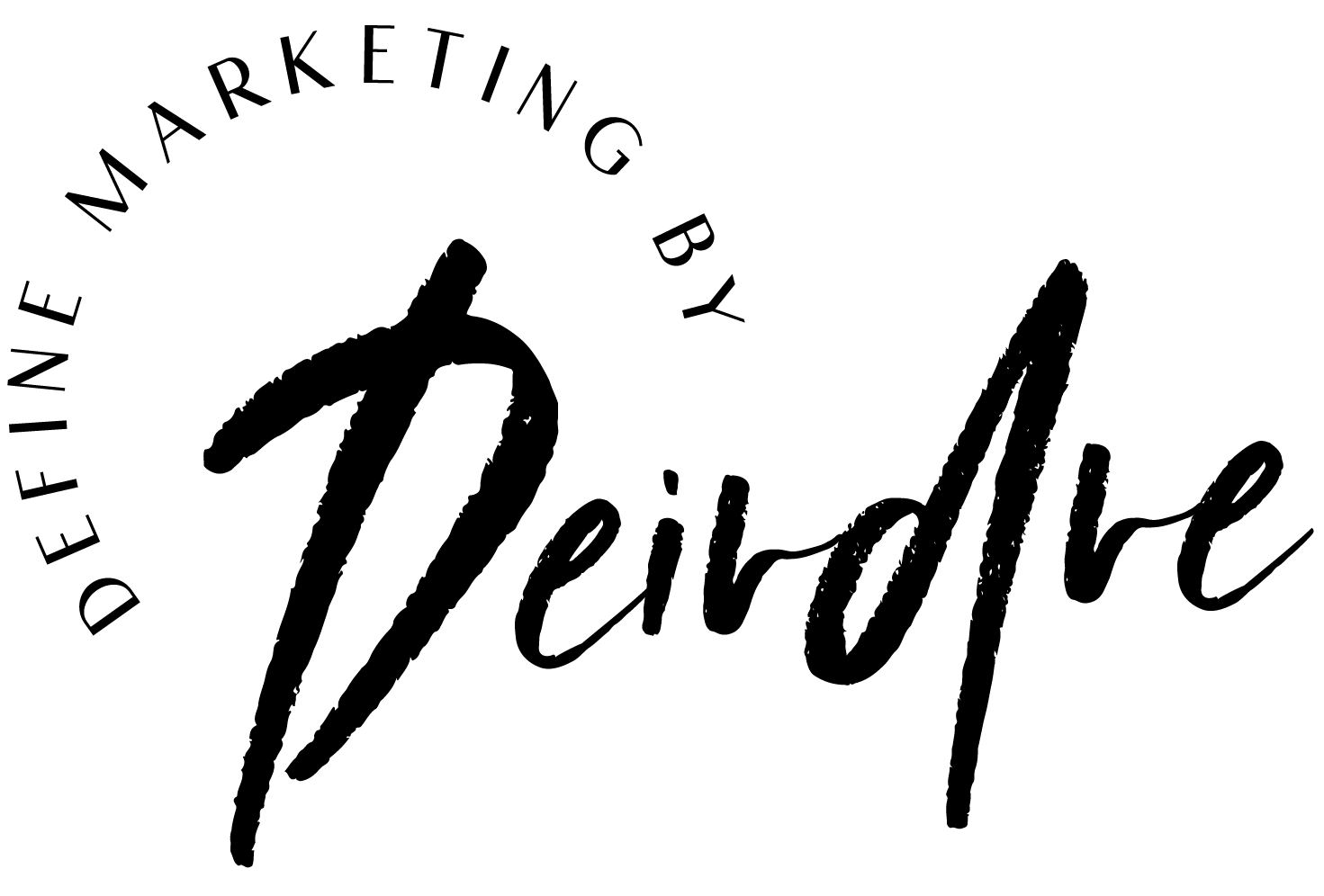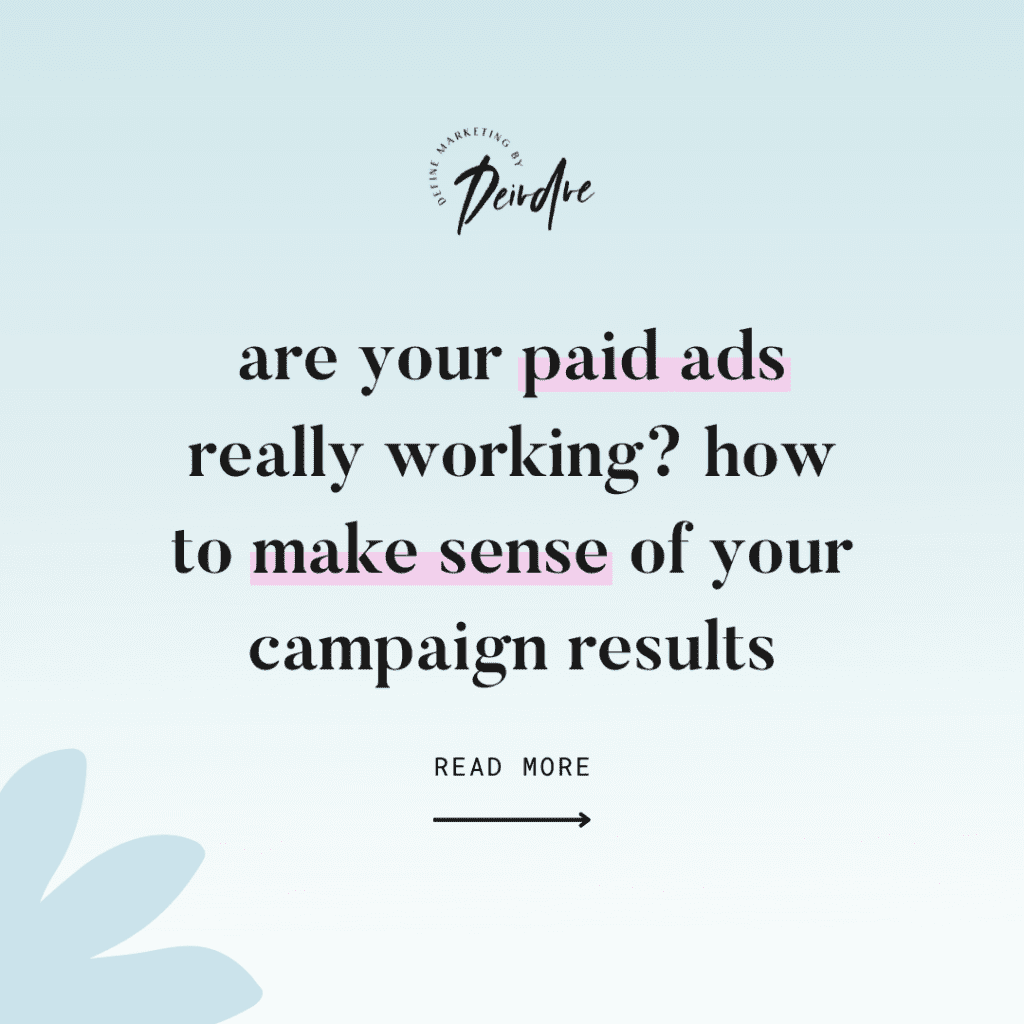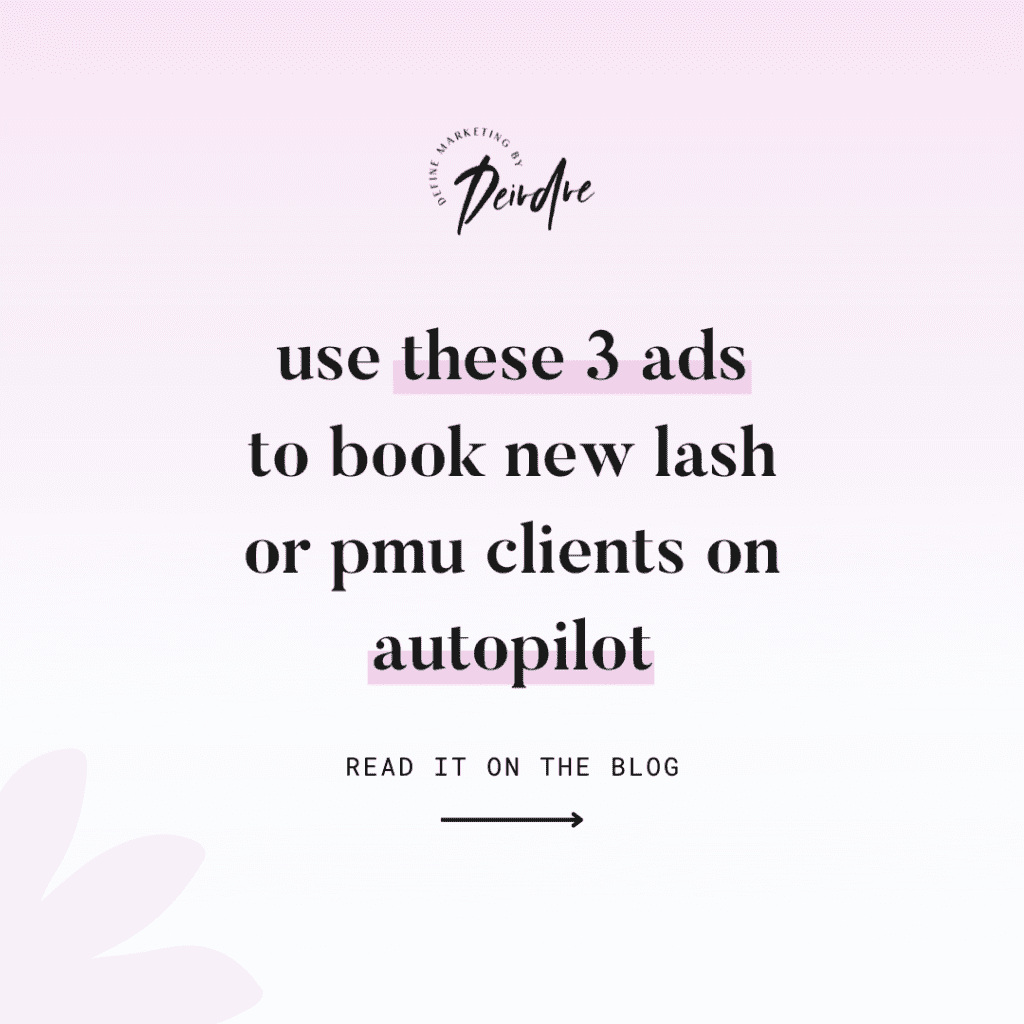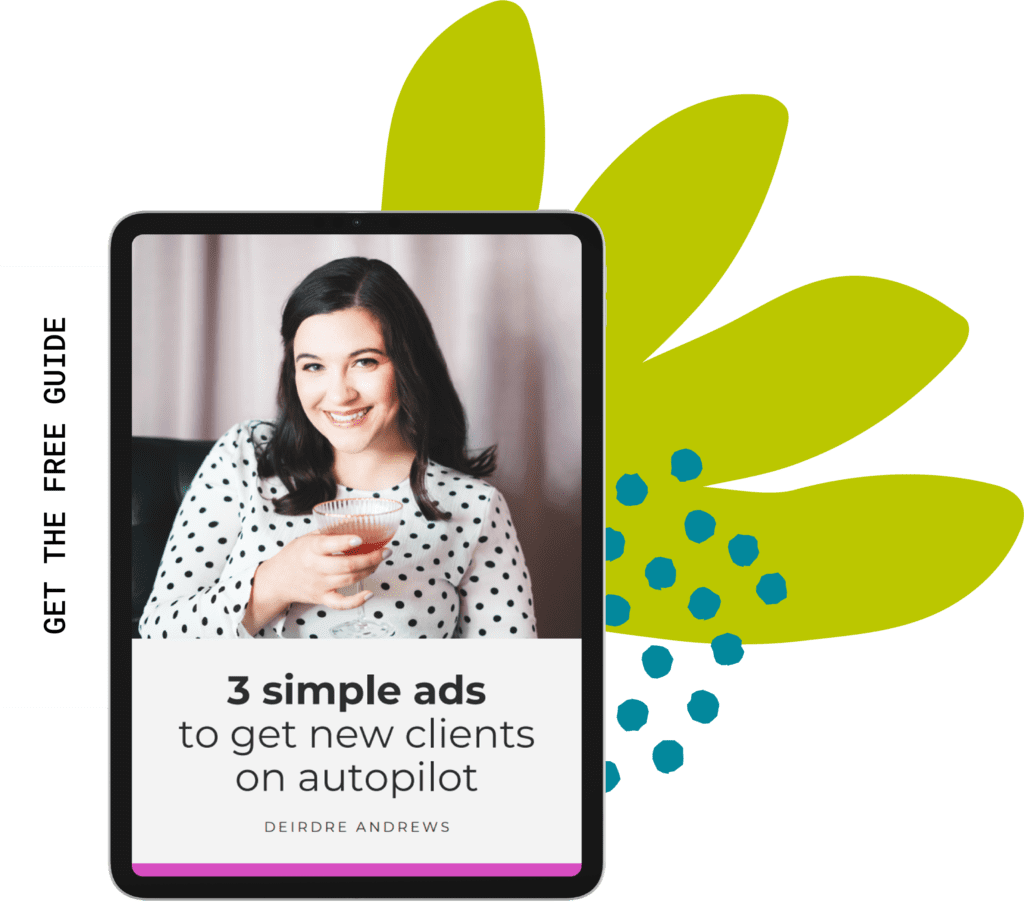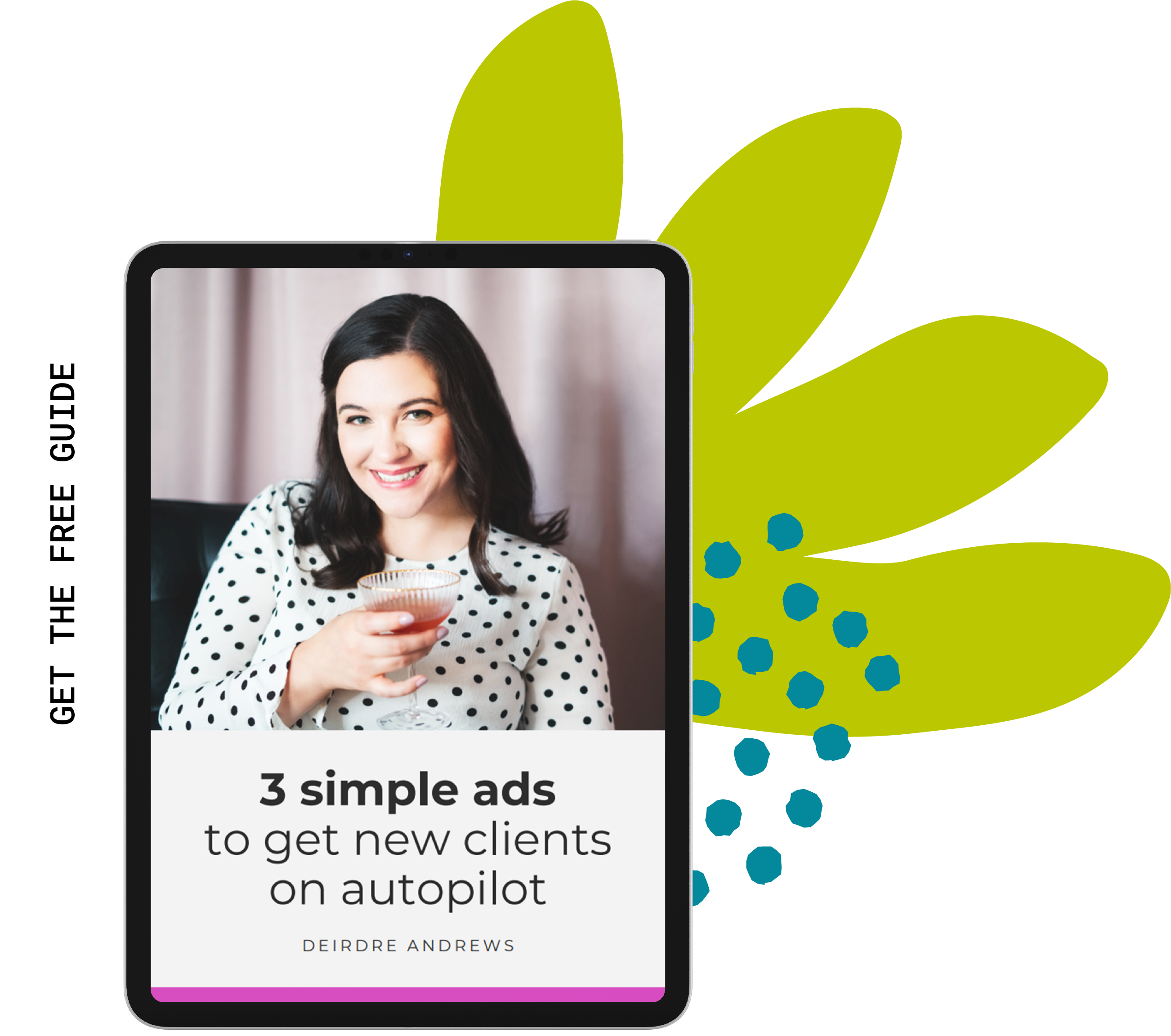Prefer to listen to this article? Tap to play!
One of the most common complaints I hear about paid ads from small business owners is that they don’t know how to interpret what’s happening within their campaigns.
I get messages like, “Hey, my ads have been running for a few weeks now, I can see the money coming off my credit card, but I have no idea what I’m getting out of it.”
Or sometimes I hear things like, “Hey, my ads are live and I can see that I’m getting clicks but I don’t understand what all the other numbers mean!”
Taking time to actually analyze and understand your results is one of the most important steps you can take if you want to see success from your paid ads. I mean, of course, you want to see success! Why else would you be running ads?
In this post, we’re going to talk about how to analyze your paid ads data, so you can understand what’s actually going on and make informed business decisions.
But… SPOILER ALERT!
I’m NOT going to walk you through the reporting dashboard or talk about things like CPMs, Click-Through Rates or Cost per Click because, in all honesty, those numbers don’t really matter anymore.
Instead, I want to get you thinking about your results in relation to your business goals.
And I thought the best way to do that would be to take you behind the scenes of a real-life campaign that I’m working on right now.
Let’s do this!
Behind the Scenes of a Real-Life Campaign
I’d like to introduce you to my client, Michelle, owner of Imperfection is Beauty. She’s a lash extension artist in Arizona specializing in premade volume fans. She is SO passionate about premade lashes that, in addition to her work as a lash artist, she developed her own product line and is selling her goods to other artists across the United States through Shopify.
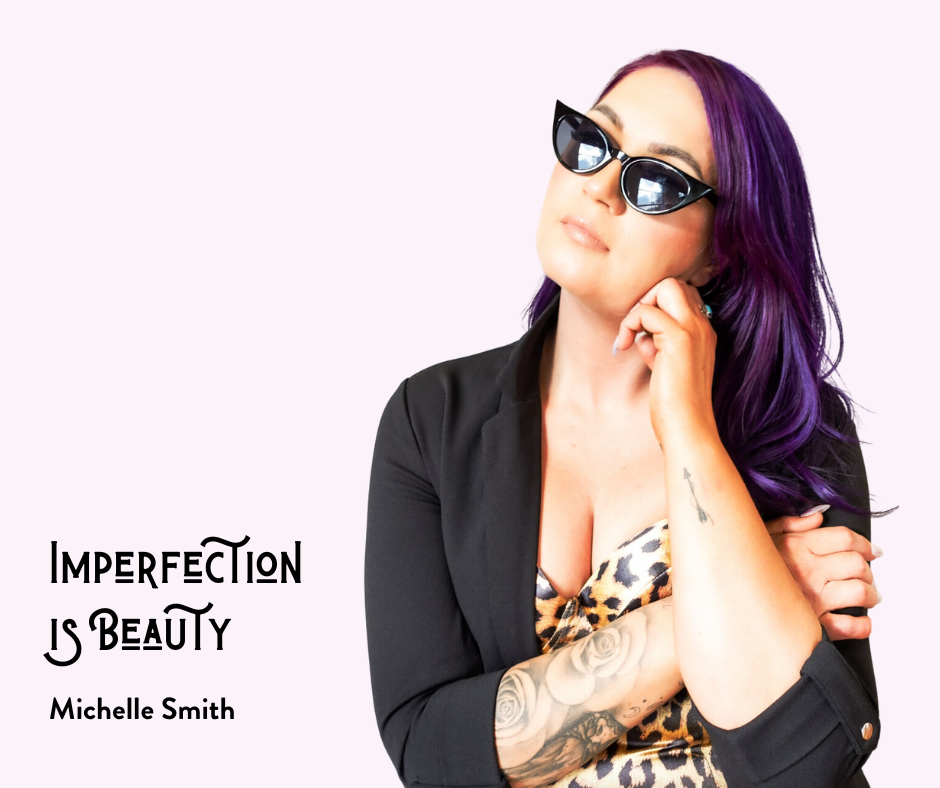
When I first met Michelle, she had consistently been making around $1,000 per month (sometimes less, sometimes more) from her Shopify store alone. She was generating that revenue mainly by posting on Instagram and attending industry events like LashCon.
But after a year, she wasn’t seeing any growth. So she decided to try adding paid ads into her marketing mix and that’s how we connected!
NOTE: I want to be transparent that I don’t usually take on e-commerce clients. Service-based businesses are more my jam, so I had absolutely no idea what to expect (Michelle knows this).
I also want to mention that she had absolutely zero Meta Pixel data before we started, meaning there was no purchase history to help the algorithm get started and no warm audiences to retarget. We were starting completely from scratch and this was something we had to keep in mind when setting goals and expectations.
The Results After 30 Days
Michelle’s campaign has now been running for just over 30 days and the results are both GOOD and NOT GOOD.
Now, you’re probably wondering, “What the hell, Deirdre??? How can results be both good and NOT good? You either made money or you didn’t, right?“
Well, it’s not always that simple…
Whether you classify your ads as SUCCESSFUL or NOT SUCCESSFUL depends entirely on your business goals. And if you have multiple business goals (which most people do) you may be seeing success in one area but not another.
This is exactly what’s happening with Michelle’s campaign right now, so we’re looking at how her results stack up against each of her business goals and using this data to make an informed decision about what to do next.
Goal #1: Get More Customers ✅
In the grand scheme of things, there are really only two ways to grow your business.
1) Get more customers
2) Increase the value of existing customers
Ideally, we’d like to do both. But since Michelle’s business is fairly new and somewhat of a “best-kept secret” we decided to focus our efforts on getting her products in front of new people and growing her customer base.
Did we succeed? Let’s take a look…
In the last 30 days, Michelle received 27 orders, and 23 of those were from NEW customers.

That’s an increase of 130% or 2.3x more new customers than the month prior. And if we look back over the last year, it’s 360% or 4.6x more than her monthly average.
So, did we achieve our goal of getting more customers? YES, WE DID!
Goal #2: Make More Money ✅
This may seem like an obvious one, but we’ve outlined this as a separate goal because getting more customers doesn’t always mean making more money (the value of each customer matters and we’ll talk about that in just a minute).
In the last 30 days, Michelle’s Shopify store generated $2,883.71.

That’s an increase of 100% or 2x more than the month prior. She literally DOUBLED her revenue! And as a nice little bonus, she boosted her average order value by about 10% as well.
If we break this down into actual money made, that’s $1,442.92 additional dollars that Michelle brought into her business.
Sounds pretty awesome, right? I’m sure you’d probably LOVE to double your revenue! Michelle is pretty happy about it, too!
Did we accomplish our goal of making more money? YES, WE DID!
But of course, there’s more to this story…
Remember how I said that the results of this campaign were both good and bad? Here’s where we get to the bad part. While I’m not thrilled about sharing the following numbers, it’s important to consider all angles when making business decisions.
So, here we go…
Goal #3: Make a Profit ❌
Getting more customers and making more money are just a few of the awesome perks that come with running paid ads. But the thing about paid ads is that they’re, well, paid. They cost money, and if you’re spending more money than you’re making, you won’t be able to sustain your results for long.
Profit can be looked at from a few different angles, so let’s break this down.
Over the last 30 days, Michelle made $2,883.71 in sales, but she SPENT $2,705.45 on ads to generate those sales. That’s only $178.26 in profit or a Return on Ad Spend (ROAS) of 1.06.
What does this mean? Is this good? Is it bad?
Well, considering we had absolutely no Meta Pixel data to start with, I’m happy that we pretty much broke even in our first month. But just breaking even is not sustainable in the long run. We need to make a profit.
Now, it can also be argued that, since Michelle’s Shopify store was already bringing in some revenue before she started running ads, only her additional revenue should be counted as a Return on Investment.
So let’s look at our results from that perspective…
Over the last year, Michelle has been earning an average of $1,064.52 per month. We can reasonably expect that she would have made that much anyway without running ads.
In that case, the campaign really only brought in an additional $1,819.19. That’s a LOSS of $887.26 or a Return on Ad Spend (ROAS) of 0.67.
So, did we achieve our goal of making a profit? NOPE! We FAILED!
How We’re Using This Data to Make Decisions
Alright, let’s quickly summarize what we’ve accomplished so far…
✅ Got More Customers — Michelle converted 23 NEW customers which is 2.3x more than the month prior and 4.6x more than her monthly average.
✅ Made More Money — Her Shopify store generated $2,883.71 in sales which is 2x more than the month prior and 2.7x more than her monthly average.
❌ Did NOT Make a Profit — Michelle spent $2,705.45 on paid ads. When comparing revenue vs ad spend this means the campaign broke even. When looking at additional revenue alone, the campaign lost $887.26.
So, what should we make of this? And how do we decide where to go from here?
Well, we know the campaign is working. The ads are doing their job to find new customers and increase sales…
They’re just COSTING too much.
What we choose to do next ultimately comes down to two key factors:
1) What are Michelle’s long-term business goals?
Michelle’s long-term goal is to turn Imperfection is Beauty into a nationally recognized indie lash brand. She wants to build a Shopify store that generates enough income to quit her day job and sustain her lifestyle for years to come. And she wants to become a mentor to other lash artists trying to grow their own businesses.
That hasn’t happened yet (nor did we expect it to happen within a month of launching a paid ads campaign) so, we must keep going. The question then becomes:
2) How long can she afford to wait before she MUST see a Return on Investment (ROI)?
This is where Customer Lifetime Value (CLV) comes into play.
How Customer Lifetime Value (CLV) Impacts Marketing Decisions
Your Customer Lifetime Value (CLV) is the amount of revenue your business can reasonably expect to earn from a single customer throughout your relationship with that person. This is important to know because ROI and profitability aren’t solely determined by a customer’s first purchase.
If you offer a repeat service or the type of product that people need to order more than once, it’s reasonable to expect that once someone becomes a customer you will continue to make money from that person in the future.
So, what looks like a loss right now could actually turn into a profit down the road.
Let’s take a look at how Michelle’s CLV impacts her campaign…
As I mentioned earlier, Michelle spent $2,705.45 to convert 23 NEW customers and depending on how you look at things, the campaign either broke even or lost money.
But if we look back at her numbers for the last 6 months, we can see that each customer has spent, on average, about $155 within that time frame. If Michelle’s 23 new customers continue to spend in the same way, they’ll generate approximately $3,565 over the next 6 months.
That’s a profit of $860 and a Return on Ad Spend (ROAS) of 1.32!
While these aren’t “get rich” numbers, this shows us that we’re on the right track and that Michelle’s investment in marketing today will contribute to the growth of her business in the future.
So, back to the question…
How long can Michelle afford to wait until she sees a return on her investment? Is 6 months feasible?
I asked her this exact question and her answer was that as long her ad spend continues to break even with her store revenue, she’ll continue to invest in paid ads.
How We’re Moving Forward with Paid Advertising
After digging into the numbers and asking some tough questions, we’ve decided to continue the campaign with the same three goals:
1) Get more customers
2) Make more money
3) Make a profit
We’ll be focusing on reducing the Cost per Acquisition through campaign optimization and improving the user experience of Michelle’s Shopify store. But that’s a whole other topic for another day.
Questions to Ask Yourself When Analyzing Your Paid Ads Campaign
Let’s wrap this up with a few tips to help you analyze and understand your own campaign metrics.
Question #1: What are your business goals?
Get specific. Obviously, your goal is to grow your business. But how exactly are you going to make that happen? What steps are involved? Think both short-term and long-term. Michelle’s goals are to get more customers, make more money, and make a profit. But other goals might include increasing your social media engagement or increasing your customer value.
Question #2: Have you achieved any of these goals since launching your campaign?
If the answer is no across the board, you may want to pause your paid ads while you work out where the disconnect is happening. If the answer is yes to some goals and no to others, you can most likely keep going and keep optimizing.
Question #3: How long can you afford to wait before you MUST get results?
Advertising is an investment and investments take time to generate returns. It’s important to keep this in mind before you launch a campaign. With that said, I understand that you can’t just blindly pour your money into something, hoping and praying that it’s going to pay off eventually. So give yourself a target date – let’s say 3 months – for when you need to start turning a profit.
Question #4: What needs to change in order for you to get those results?
This one is tough, I know. Right now you’re probably thinking, “Deirdre, I don’t know what to change! Aren’t you supposed to tell me that?” Unfortunately, there isn’t a one-size-fits-all answer. But look back at your goals to get an idea of where you need to make improvements.
In our case, the one goal we didn’t achieve was making a profit. Why didn’t we make a profit? Well, we DID get a significant number of new customers so that wasn’t the issue…
The issue was that those new customers were too expensive. We paid more than we earned to acquire them. So, that’s what needs to change. We need to lower our Cost per Acquisition.
Once you’ve figured out what the problem is, then you can start looking into how to fix it.
Google is your friend. So is YouTube.
Trust me, I’ve watched at least 10 videos in the last week alone about reducing Cost per Acquisition. The learning doesn’t stop.
Stay Tuned as I Optimize This Campaign
I hope I’ve got you looking beyond the numbers in your dashboard and thinking about your campaign results in a more holistic way. Because success in advertising isn’t just about Click-Through Rates — it’s about getting you a few steps closer to achieving your personal business goals.
Stay tuned because I can’t wait to share more about how I optimize my campaigns.
